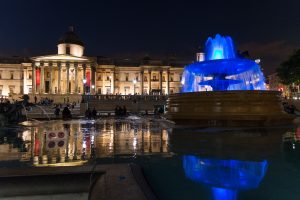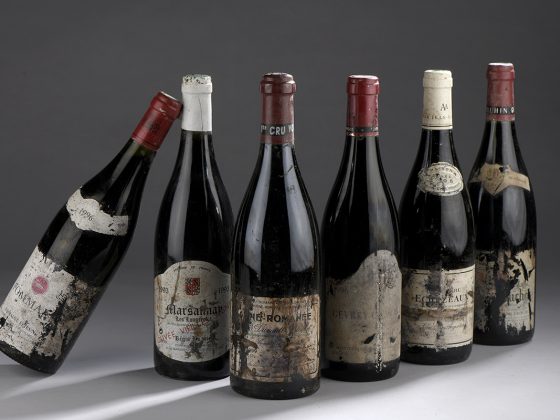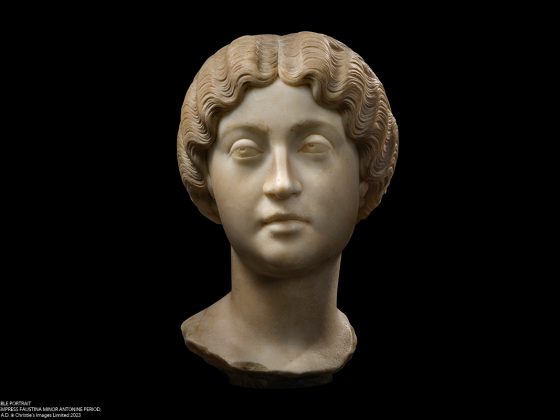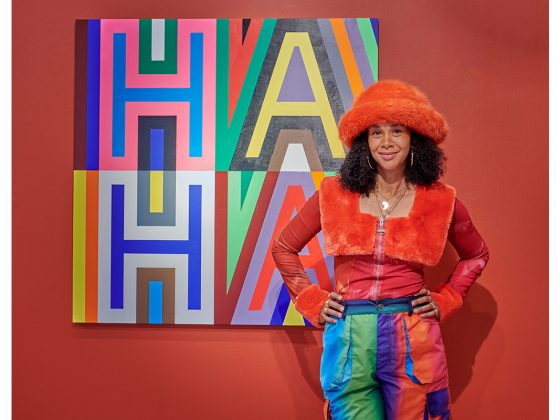SOTHEBY´ S RINGS IN THE NEW YEAR WITH MASTER WEEK SALES SERIES IN NEW YORK, TRAVELING THROUGH THE FIFTH DYNASTY OF ANCIENT EGYPT TO THE 19TH CENTURY, SHOWCASING THE HISTORY OF THE WESTERN ART.

Late 5th Dynasty
©Courtesy of Sotheby’s
This January, Sotheby’s is pleased to present Masters Week in New York, comprised of a series of complementary sales of Old Master paintings, drawings, sculpture, and nineteenth century European art. The week is led by this season’s Master Paintings and Sculpture Part I sale of 57 works, for the first time spanning millennia.

Lot 20 – Andrea del Sarto. Portrait of a Man. ©Courtesy of Sotheby’s 
Lot 46 – El Greco and Workshop, Saint Francis in Ecstasy ©Courtesy of Sotheby’s
The sale of Master Paintings and sculpture is led by Botticelli’s arresting Man of Sorrows, a seminal masterpiece of the Florentine artist’s late career. Also featured are two incredibly important rediscoveries by other leading Italian Renaissance artists, Correggio and Andrea del Sarto, as well as a beautiful, early work by Giovanni Bellini. Highlights by Northern artists include a captivating panel by Peter van Mol and a jewel-like still-life by Adriaen Coorte; highlights by Spanish artists include a late example by El Greco and a luminous canvas by Murillo; highlights by French artists include an enchanting portrait by Largilliere and a monumental still life by Anne Vallayer-Coster. Other strong examples by leading female artists like Vallayer-Coster anchor this sale, in particular two works by Artemisia Gentileschi, a small and delicate still-life by Rachel Ruysch and a monumental mythological scene by Sophie Rude. Two important sculptures also lead this sale: a rare Madonna and Child attributed to Hans Kamensetzer and an Egyptian limestone figure of a man from the late 5th dynasty (circa 2350-2290 B.C.), alongside European paintings and sculpture dating from the 14th to 19th centuries.

Saint Mary Magdalen reading.
©Courtesy of Sotheby’s
Following the record-breaking success of our 2021 sale of Botticelli’s Portrait of a Young Man Holding a Roundel, Sotheby´ s is excited to present a religious work from Botticelli’s late career, The Man of Sorrows.
Sotheby´ s is also proud to present Master to Master: The Nelson Shanks Collection which consists of 53 lots Baroque painting, sculpture, drawing, and furniture from the collection of American realist painter Nelson Shanks, and several works from Shanks’s own hand as well as items from his studio
This year’s live sales also include a diverse range of works in the Master Works on Paper from Five Centuries sale and The European Art Sale Part I. The week concludes with several online sales: Master Paintings Part II, Old Master and British Works on Paper, Master Sculpture & Works of Art Part II, and The European Art Sale Part II.

Diogenes with his lantern looking for an honest man
©Courtesy of Sotheby’s
George Wachter, Sotheby’s Chairman and Co-Worldwide Head of Old Master Paintings, commented:
“To bring to auction a work by Botticelli of this quality is a major event in the world of Old Masters–but to do so a year after the landmark sale of Botticelli’s Young Man Holding a Roundel is a once-in-a-generation phenomenon. This extraordinary painting is a prime example of what makes Botticelli such a captivating artist: a bold visual style coupled with a singularly human approach to portraiture. In taking what is a rather difficult and somber subject matter of Christ following his persecution, Botticelli creates a deeply complex and moving portrait that is truly timeless.”
Christopher Apostle, Sotheby’s Head of Old Master Paintings in New York, said:
“During the final decade of his life, Botticelli’s output was markedly different from his earlier career, which is often characterized as the epitome of Renaissance ideals of humanism and beauty. The Man of Sorrows is a remarkably realistic portrayal of Christ symbolizing his suffering and death, but with an astounding degree of humanity that is the hallmark of Botticelli’s portraiture, and showcases Christ’s divinity with a stunning psychological depth. The painting spotlights Botticelli’s intense spirituality that greatly influenced his later period work and life, and presents a unique insight into Botticelli the man and Botticelli the artist.”
The Man of Sorrows was unveiled in a public exhibition in Hong Kong in October, where interest in the artist has reached an all-time high at Sotheby’s and the wider arts scene: Botticelli’s record-breaking Young Man Holding a Roundel was underbid by an Asian collector; and last year, an exhibition of the artist’s work at the Hong Kong Museum of Art received wide acclaim (Botticelli and His Times – Masterworks from the Uffizi, opened from October 23 until February 2021). Following the exhibition in Hong Kong, The Man of Sorrows embarked on a global tour to Los Angeles, London, and Dubai before returning to New York for a pre-sale exhibition in January.
SANDRO BOTTICELLI’S
THE MAN OF SORROWS

The Man of Sorrows
©Courtesy of Sotheby’s
A defining example of his late career, The Man of Sorrows is an illustrative representation of the changes in Botticelli’s style and subject matter in the late 15th to early 16th century. As opposed to his poetic mythological scenes such as the Birth of Venus and Primavera of the previous decade, Botticelli’s output from the 1490s and onward is more sober, austere and spiritual in nature, as exemplified in the present work and his Mystic Nativity of 1500 in the National Gallery in London.
This stylistic departure is likely dictated by the shifting political and religious climate in Florence during this time. In 1494 Florence was invaded by foreign armies, the Medici family was expelled, and fears of an apocalypse at the turn of the half-millennium were fueled by the hell-fire preaching of the fervent Dominican friar Girolamo Savonarola (1452–1498). Appointed Prior of San Marco, the convent favored by the Medici, Savonarola grew in power and popular appeal. A charismatic preacher, he railed against the sin and iniquity of the people, becoming a religious dictator. He declared Florence a new Jerusalem, demanded that the citizens purge themselves of sin and instigated the Bonfire of the Vanities, on which were burned luxury objects, clothing and paintings considered idolatrous. According to Giorgio Vasari, Botticelli himself felt so chastened by Savonarola’s sermons that he consigned a number of his own paintings – feeling them to be impure – to the flames. Eventually the Signoria – Florence’s ruling council – arrested Savonarola, tried him, made him confess to being a false prophet and on 28 May 1498 had him hanged and burnt as a heretic in the Piazza della Signoria. Vasari’s claim that Botticelli never painted again after Savonarola’s death is untrue but, undoubtedly, Botticelli fell under the friar’s influence and his teachings had a direct effect on his art. Certainly, the central message conveyed by the Man of Sorrows is Christ’s conquering of death and his resurrection, while its stark composition underscores Savonarola’s message of a return to the fundamental tenets of the Christian religion.

The Man of Sorrows
©Courtesy of Sotheby’s
The painting’s most distinctive features are the strictly frontal presentation of Christ and the halo of angels holding instruments of the Passion painted en grisaille, a painting technique by which an image is executed entirely in shades of gray and usually severely modeled to create the illusion of sculpture. Covering their eyes in a variety of gestures conveying their grief over Christ’s suffering, angels orbit around Christ’s head against a solemn black background. The close-up view presents the head and torso of Christ after his deposition from the cross; his wounded hands are crossed over his breast; and the viewer is invited to contemplate his sacrifice. At the same time, the directness of the image – above all the piercing quality of Christ’s gaze – evokes secular imagery and gives it the singularity of a portrait.
Botticelli renders the dual nature of Christ’s humanity and divinity by bringing remarkable psychological depth to the image. Christ is shown half-length, displaying three wounds: those in his hands from when he is nailed to the cross and the wound in his right side inflicted with a lance by one of the soldiers after his death. Angels bearing the Arma Christi, or instruments of the Passion, encompass his head. Symbolizing Christ’s sufferings and death, the objects painted by Botticelli in naturalistic colour and meticulous detail are, on the left: the ladder that features in the Raising of the Cross and the Descent; the scourge used to flagellate Christ; and the lance with which he was stabbed; and on the right: the column to which Christ was bound and flogged; the pincers used to draw out the nails; and the sponge soaked in vinegar and fixed to a cane that is offered to Christ before his death. Crowning the design at the top is the cross, which is prominently positioned above Christ’s head as a symbol of his sacrifice but also as the emblem of the Christian religion. A trio of angels connected by the elegant serpentine lines of ribbon-like cloth is arranged around the cross: the central figure kneels in reverence before it, holding it respectfully with draped cloth; the one to the left holds up the three nails used to fasten Christ’s hands and feet to the cross; and the angel on the right lifts one end of the cloth that loops across all three – the sudarium, or veil, used by St. Veronica to wipe the sweat from Christ’s brow as he bears his cross to Calvary.

The Man of Sorrows
©Courtesy of Sotheby’s
The Man of Sorrows was first recorded in the collection of Mrs. Adelaide Kemble Sartoris (1814-1879), a famed English opera singer, who along with her husband, were two influential socialites in Victorian England and in Rome. The painting descended in the family to Adelaide’s great granddaughter, Lady Cunynghame, who sold it at auction in 1963 for £10,000 ($28,000). Since then, it has remained in the same distinguished private collection, practically unseen until its recent inclusion in the major monographic exhibition devoted to the Florentine master at the Städel Museum in Frankfurt in 2009–2010.
The Man of Sorrow comes to auction following Sotheby’s record-breaking sale of Botticelli’s Young Man Holding a Roundel in January 2021, which realized $92.2 million — making it one of the most valuable portraits of any era ever sold, one of the most valuable Old Master Paintings ever sold at auction, and the most valuable work ever sold in an Old Masters auction. Despite the landmark sale earlier this year, works by Botticelli – from any period – remain exceedingly rare at auction. His late works, in particular, very seldom appear on the market, with only three other works from this period (post 1492) known to be in private hands.
Master Paintings & Sculpture Part I
Live Auction by Sotheby´ s
27 January 2022 • 10:00 AM EST • New York













